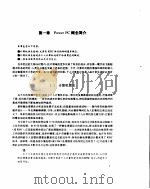《软件体系结构 一门初露端倪学科的展望》
| 作者 | MaryShaw,DavidGarlan著 编者 |
|---|---|
| 出版 | 北京:清华大学出版社 |
| 参考页数 | 244 |
| 出版时间 | 1998(求助前请核对) 目录预览 |
| ISBN号 | 730202832X — 求助条款 |
| PDF编号 | 87614598(仅供预览,未存储实际文件) |
| 求助格式 | 扫描PDF(若分多册发行,每次仅能受理1册) |
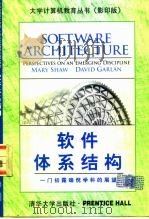
CHAPTER 3 Case Studies33
3.1 Key Word in Context33
3.1.1 Solution 1: Main Program/Subroutine with Shared Data34
3.1.2 Solution 2: Abstract Data Types35
3.1.3 Solution 3: Implicit Invocation36
3.1.4 Solution 4: Pipes and Filters37
3.1.5 Comparisons38
3.2 Instrumentation Software39
3.2.1 An Object-Oriented Model39
3.2.2 A Layered Model40
3.2.3 A Pipe-and-Filter Model41
3.2.4 A Modified Pipe-and Filter Model41
3.2.5 Further Specialization42
3.2.6 Summary42
3.3.1 Design Considerations43
By Marco Schumacher43
3.3 Mobile Robotics43
3.3.2 Solution 1: Control Loop44
3.3.3 Solution 2: Layered Architecture45
3.3.4 Solution 3: Implicit Invocation47
3.3.5 Solution 4: Blackboard Architecture49
3.3.6 Comparisons51
3.4 Cruise Control51
3.4.1 Object View of Cruise Control53
3.4.2 Process-Control View of Cruise Control53
3.4.3 Analysis and Discussion58
3.4.4 Summary60
3.5 Three Vignettes in Mixed Style60
3.5.1 A Layered Design with Different Styles for the Layers60
3.5.2 An Interpreter Using Different Idioms for the Components63
3.5.3 A Blackboard Globally Recast as an Interpreter66
4.1 Shared Information Systems69
CHAPTER 4 Shared Information Systems69
4.2 Database Integration70
4.2.1 Batch Sequential70
4.2.2 Simple Repository71
4.2.3 Virtual Repository75
4.2.4 Hierarchical Layers79
4.2.5 Evolution of Shared Information Systems in Business Data Processing80
4.3 Integration in Software Development Environments82
4.3.1 Batch Sequential83
4.3.2 Transition from Batch Sequential to Repository83
4.3.3 Repository85
4.3.4 Hierarchical Layers86
4.3.5 Evolution of Shared Information Systems in Software Development Environments88
4.4 Integration in the Design of Buildings88
4.4.1 Repository89
4.4.2 Intelligent Control90
4.4.3 Evolution of Shared Information Systems in Building Design91
4.5 Architectural Structures for Shared Information Systems93
4.5.1 Variants on Dataflow Systems93
4.5.2 Variants on Repositories94
4.6 Some Conclusions95
CHAPTER 5 Architectural Design Guidance97
5.1 Guidance for User-Interface Architectures97
by Thomas G. Lane97
5.1.1 Design Spaces and Rules97
5.1.2 A Design Space for User-Interface Architectures100
5.1.3 Design Rules for User-Interface Architecture110
5.1.4 Applying the Design Space: An Example111
5.1.5 A Validation Experiment113
5.1.6 How the Design Space Was Prepared114
5.1.7 Summary115
5.2.2 Background116
5.2.1 Overview116
5.2 The Quantified Design Space116
by Toru Asada, Roy F. Swonger, Nadine Bounds, and Paul Duerig116
5.2.3 Quantified Design Space120
5.2.4 Conclusion127
CHAPTER 6 Formal Models and Specifications129
6.1 The Value of Architectural Formalism129
6.2 Formalizing the Architecture of a Specific System130
6.3 Formalizing an Architectural Style133
6.3.1 Filters134
6.3.2 Pipes135
6.3.3 Pipe-and-Filter System136
6.4 Formalizing an Architectural Design Space139
6.5 Toward a Theory of Software Architecture142
6.6 What Next?142
6.7 Z Notation Used in This Chapter143
7.1 Requirements for Architecture-Description Languages147
CHAPTER 7 Linguistic Issues147
7.1.1 The Linguistic Character of Architectural Description148
7.1.2 Desiderata for Architecture-Description Languages151
7.1.3 Problems with Existing Languages155
7.2 First- Class Connectors160
7.2.1 Current Practice160
7.2.2 Problems with Current Practice161
7.2.3 A Fresh View of Software System Composition165
7.2.4 An Architectural Language with First- Class Connectors166
7.2.5 The Promise of Explicit Architectural Notations171
7.3 Adding Implicit Invocation to Traditional Programming Languages172
7.3.1 Introduction172
7.3.2 Adding Implicit Invocation to Ada174
7.3.3 Evaluation181
8.1 UniCon: A Universal Connector Language183
CHAPTER 8 Tools for Architectural Design183
8.1.1 Components and Connectors185
8.1.2 Abstraction and Encapsulation186
8.1.3 Types and Type Checking187
8.1.4 Accommodating Analysis Tools188
8.2 Exploiting Style in Architectural Design Environments190
8.2.1 What Is Architectural Style?190
8.2.2 Automated Support for Architectural Design192
8.2.3 Observations about Environments for Architectural Design202
8.3 Beyond Definition/Use: Architectural Interconnection204
8.3.1 Implementation versus Interaction205
8.3.2 Example206
8.3.3 The WRIGHT Model of Architectural Description208
8.3.4 Reasoning about Architectural Descriptions210
8.3.5 A Brief Explanation of Our Use of CSP211
9.1.1 Objectives213
CHAPTER 9 Education of Software Architects213
9.1 Philosophy and Course Overview213
9.1.2 Approach215
9.2 Course Description215
9.3 Assignments218
9.3.1 Purpose218
9.3.2 Readings219
9.3.3 Architectural Development Tasks220
9.3.4 Formal Modeling222
9.3.5 Analysis and Interpretation of a System222
9.4 Evaluation223
9.4.1 Lessons from the Initial Offering223
9.4.2 Conclusions About Teaching Software Architecture225
Bibliography227
Index239
1998《软件体系结构 一门初露端倪学科的展望》由于是年代较久的资料都绝版了,几乎不可能购买到实物。如果大家为了学习确实需要,可向博主求助其电子版PDF文件(由MaryShaw,DavidGarlan著 1998 北京:清华大学出版社 出版的版本) 。对合法合规的求助,我会当即受理并将下载地址发送给你。
高度相关资料
-
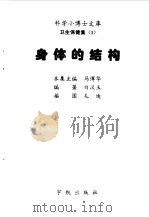
- 身体的结构
- 1998 北京:宇航出版社
-

- 晶体管电路基础
- 1973
-
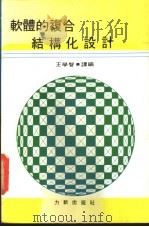
- 软体的复合——结构化设计
- 力新出版社
-

- 教育学科体系的结构研究
- 1999 北京:中央民族大学出版社
-

- 软件工程结构化系统分析和设计
- 1991 北京:中国铁道出版社
-

- 工作站系统结构、软件开发及应用
- 1993 北京:国防工业出版社
-
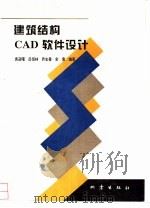
- 建筑结构CAD软件设计
- 1995 北京:地震出版社
-

- 8086/8088微型计算机系统 体系结构和软硬件设计
- 1987 北京:科学出版社
-
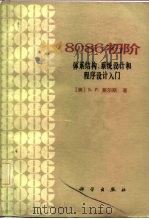
- 8086初阶 体系结构、系统设计和程序设计入门
- 1984 北京:科学出版社
-
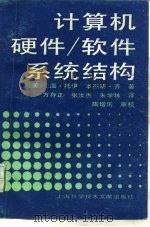
- 计算机硬件/软件系统结构
- 1990 上海:上海科学技术文献出版社
-

- VAX-11体系结构
- 1985 北京:清华大学出版社
-

- 计算机软件基础与微型计算机体系结构
- 1989 北京:高等教育出版社
-
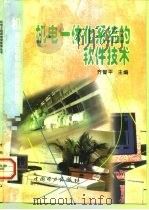
- 机电一体化系统的软件技术
- 1998 北京:中国电力出版社
提示:百度云已更名为百度网盘(百度盘),天翼云盘、微盘下载地址……暂未提供。➥ PDF文字可复制化或转WORD

